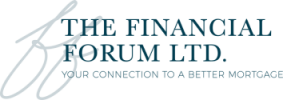First Time Buyers Guide – Tips for Saving for Down Payment!
Investing a down payment for a house can be a complicated decision given the unpredictable status of the Canadian housing market. Most buyers need to deal with changing mortgage criteria, possibility of the rising of interest rates in the future, and fewer houses coming up for sale in the market. In addition, you’d also want to invest a larger down payment than the minimum 5%. In this way, you can avail of lower rates of interest, smaller instalments, and more favorable terms and conditions.
Chances are that you’re ready with the down payment, but not quite ready to buy that house as yet. A good option is to invest that amount so that you have a larger sum in hand when you’re ready to offer the down payment. At the same time, you’ll want an investment option that is safe and easy to encash if you find the perfect house and need the funds in a hurry.
Investment Options to Choose From
Stocks and Exchange Traded Funds (ETFs)
Although stocks and ETFs have the potential to bring you rich returns, they also come with a high risk quotient. Invest with caution.
High-Interest Online Savings Accounts
Online banks are a good place to keep your money safe and they may offer you more attractive interest rates as compared to the conventional brick-and-mortar banks. That’s because they don’t incur the typical overhead costs that the Big Five banks have. In case you’re wary about using an online bank, you can sign up for a membership with the Canadian Deposit Insurance Corporation (CDIC). In this way, you can get full insurance for your money up to $100,000.
Bank Account
Keeping your money in a bank account is, no doubt, a safe option. But, whether you choose a chequing or savings account, you can expect negligible interest rates.
Guaranteed Investment Certificate (GIC)
Investing your money in a GIC is safe and likely to earn you a guaranteed amount in interest within a fixed time interval. The downsides? Since the risk factor is low, you can’t expect to earn much interest. Further, in case you decide to encash the certificate earlier, you’ll incur a major penalty.
Registered Retirement Savings Plan (RRSP)
If you own an RRSP, and are a Canadian resident who hasn’t lived in a self-owned home in the last 4 years, you qualify as a first-time homebuyer. Accordingly, the government allows you to withdraw up to $25,000 from the RRSP and use it to make a down payment by way of the Home Buyers’ Plan (HBP). In case you’re buying the house in partnership with your spouse, you can each withdraw a sum of $25,000 under the HBP. As a result, you’ll have a total of $50,000 to pay as down payment for your home. Of course, this sum is considered a loan and you must pay it back within 15 years.
Investment Account
An investment account is a deposit of funds with a financial institution such as a bank, insurance company, or brokerage house. Most such deposits are long term investments and are suitable for people who have a large sum of money that they don’t intend to use up in the near future. At any time when you decide to invest a down payment, you can withdraw it from the investment account.
Tax Free Savings Account (TFSA)
The TFSA may be the best savings channel to use if you’re saving up for the down payment for a house. Although not really a savings account, you can use it to safeguard different accounts and assets.
When choosing the best savings channel for depositing the down payment for your future home, all you need to do is create a balance between keeping the money safe and having the option to liquidate the funds easily when you need them.






